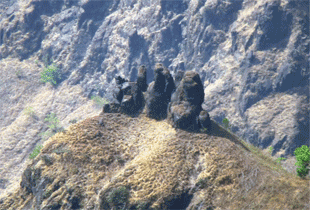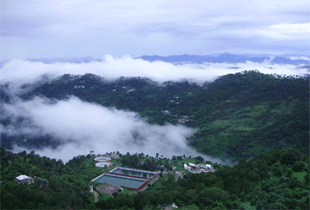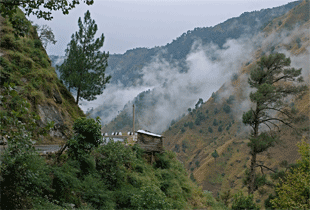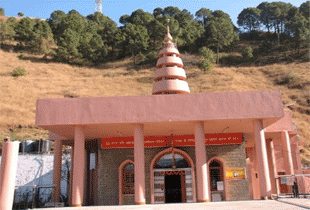Kasauli, India
Situated at an elevation of 1927 meters, Kasauli is the key hill station of Himachal Pradesh. Sited in sub-Himalayan range of mountains, the place is an ultimate destination to full of adventure and fun, along with the peace and quiet of nature. The scenic beauty and serenity of Kasauli along with its warm and friendly people make it a charming hill station. Kasauli retains an old-world-charm reminding one of the by-gone British era. This quiet little place with its gabled houses, cobbled pathways, quaint shops and manicured gardens provides magnificent views in a very subtle way to its visitors.
Narrow winding roads of Kasauli offers gorgeous views of plains of Punjab, Haryana and Chandigarh at night and the silver lining of River Satluj flowing through them. One can see Choor Chandni peak from here, the 'Mountain of the Silver Bangles' where snow shines in the moonlight as a bangle moving down the hill. The Upper and Lower Malls run through Kasauli's length. It is 20 km from Barog and 60 km from Chandigarh.
Visit in Kasauli
Kasauli is a beautiful place situated in Himachal Pradesh. It is a much loved destination for enjoying a holiday break in North India. This place is ideal for going on sightseeing tours. There are a lot of tourist attractions in Kasauli that can be visited on trip to this place. It is easily reachable from any part of the Himachal. The best way to explore Kasauli is by walking. Enjoy nature treks with your family, friends or with yourself. The roadside snack shacks serve lip-smacking local food that is loved by both the tourists and locals. Get on for your trip to Kasauli and discover nature in its purest form.
Monkey Point is the highest point in Kasauli, which is located at a distance of 4km from kasauli bus stand. Situated on a hilltop, the point features a temple that is dedicated to Lord Hanuman. This hill top is shaped like the foot of a Monkey. One can enjoy the panoramic view of the town from here and enjoy small snacks and tea after sitting here.
This is one of the oldest churches in Kasauli, which was built during the British era. It is a popular tourist attraction of Kasauli. This Church is of Anglican structure, which was founded in 1844. Earlier, the church was known as the Anglican Church. It is currently managed by the diocese of Amritsar.
Baba Balak Nath Temple is situated on the Graner hilltop. It is told that Baba Balak Nath ji appeared in dreams of a local resident one night and told him to build a temple at this place. It is another prime attraction of the town.
Shirdi Sai Baba Mandir was built in 1989 by Sai Shabha Trust; the temple is dedicated to Sai Baba. It is situated at a distance of 1 km from Garkhal. The idol of Sai Baba and the burning flame in this temple signifies the divine power of Sai Babaji.
Dharampur is located on National Highway No.22. It is situated just 16 km away from Kasauli. It houses the first T.B. Sanatorium in North India. The place is usually visited by people coming here.
Situated about 1 km from the bus stand of Kasauli, Sunset point offers a splendid view of the nearby hill regions. On a clear day, you may able to visit Chandigarh from here. Watch here the gorgeous sunset that will take your breaths away.
From the Sunset Point, a trail leads to another view point. It is called the Gilbert Hill, which is not so famous and very few travelers come here. However, the view from the Gilbert point is simply beautiful. It is an army area and you have to return from there by 6.30 PM.
Kasauli, India

March to Mid-June, Hot and Dry
Temperature:28°C – 45°C

July to September
Annual rainfall -93.2 cm

Late November To Mid-February
Temperature:15°C – 28°C
Sights of Kasauli



